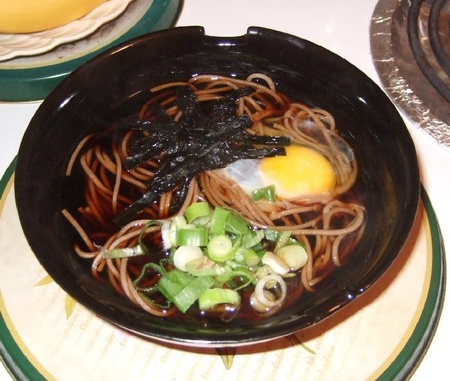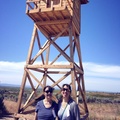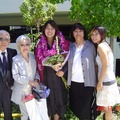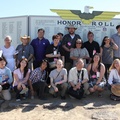I made some soba for dinner today. Soba is a Japanese noodle made with buckwheat flour. My memory of soba noodles is having them with my obachan (grandma) at this one restaurant I grew up with called Oki’s in Monterey Park, California, which is no longer open.
I must have been around six years old when one day, I was at Oki’s with my two aunts. I was trying to explain to them I wanted soba.
Although at that time, I didn’t know what they were called. I never knew the Japanese words for the things I ate. I still call inari, “football.” At the restaurant, soba was not on the menu. No one actually ordered soba but it was served as a side dish if ordered.
I kept saying, “I want the black noodles.”
They had no idea what I was talking about. Then I said it had no sauce which made them more confused. All Japanese noodles come with some sauce or broth in their mind. The poor waitress was also trying to help.
Did I want squid ink noodles, one person asked.
“NO!”
I was one stubborn and picky child. Then one of them claimed Japanese black noodle is actually poisonous and inedible.
Then I started to worry if there really was such a thing as Japanese black noodles. Did I make it up? Why didn’t anyone know what I was talking about? Why don’t my aunties know what I am talking about?
If my obachan was here, she would know what to order! Ultimately, they ordered me my usual, or what my grandpa says every yonsei (fourth generation Japanese American) likes, chicken teriyaki with shrimp tempura.
Fast forward to present day.
Now I am twenty-eight years old. Oki’s is no longer open in my hometown. I now live in Seattle, and I never ordered soba at a Japanese restaurant again.
It took me some time to realize the black noodles I was talking about were soba noodles. My family still recalls my soba story and uses it as an example to how my taste in Japanese food is different from the rest of the family.
I actually can’t remember the last time I ate the thing. But yesterday at the Japanese market, I decided it was time to try some black noodles.
© 2012 Chanda Ishisaka







